10. Mitochondria and Chloroplasts
1/40
Earn XP
Description and Tags
Exam 3
Name | Mastery | Learn | Test | Matching | Spaced |
|---|
No study sessions yet.
41 Terms
Mitochondria
undergo fusion and fission
can travel between two different cells using tunneling nanotubes
the life/death decision maker and our evolving model of the MPTP or mPTP(Mitochondrial Permeability Transition Pore) – Intrinsic (mitochondria) vs Extrinsic (Cell death receptors) triggered Apoptosis
Mitocondria-associated membrane (ER MAMs) are implicated in:
Mitochondrial Fission
Calcium homeostasis – Rapid uptake of calcium by mitochondria by the VDACs in the outer mitochondrial membrane
Regulation of lipid metabolism
Regulation of autophagy and mitophagy
Diseases such as Alzheimer’s disease and Parkinson’s disease
Fission
A way to distribute mitochondria into two daughter cells
A way in which damaged portions of mitochondria can be eliminated
Fusion
May maintain a homogeneous pool of mitochondria in the cell
Could restore the function of damaged mitochondria
May play a role in mitochondrial localization in the cell
BCL-2 over expression in cancer
makes patients chemo/radiation resisitant
Chromosomal translocations (follicular lymphoma)
Gene amplification
Mutations
consequences of BCL-2 over expression in cancer
Chemotherapy/Radiation Resistance – less effective at triggering cancer cell apoptosis
Tumor Progression – Promote tumor growth and metastasis
Metabolic Fitness – increases metabolic fitness, increasing survival in stressful environments
How to treat BCL-2 over expression cancers
new drugs being tested:
Genasense – Bcl2 antisense oligonucleotide targets Bcl2 mRNA
Obatoclax – Small molecule Bcl-2 inhibitor
Venetoclax (Venclexta)
targeted therapy
used for a broader group of patients with chronic lymphocytic leukemia (CLL)
initially approved by the Food and Drug Administration (FDA) in 2016 to treat people with CLL that has a specific genomic alteration, called deletion 17p
Synta Pharmaceuticals
In preclinical trials with Elesclomol – a drug that triggers apoptosis through
targeting the electron transport chain in cancer cell mitochondriaFast Track Orphan Drug Status for
metastatic melanomaMechanism: Increases oxidative stress
Is Oxidative Stress and the Increase in Mitochondrial Reactive Oxygen Species Important to Stem Cell biobanking/storage/shipping?
yes
can impair or damage stem cells, leading to reduced viability and function
Maintaining a balance of ROS is crucial, as low levels are needed for self-renewal and function, while excessive levels cause senescence, damage, and cell death, compromising the stem cell's regenerative potential
Cyclosporin A
an immunosuppressant that inhibits the MPTP and Protects Stem Cells
during Storage and Transport
Western Blots Can Be Used to Explore the UPR and MPTP Pathway
explore the Unfolded Protein Response (UPR) and MPTP pathway by using specific antibodies to detect and quantify the levels of proteins involved (such as UPR-related marker)
observe changes in protein expression and phosphorylation, which indicate the activation status of these pathways
comparing protein levels in control and treated samples (e.g., MPTP-treated vs. NMN-treated), scientists can determine how the pathways respond to different conditions and assess the impact of interventions
Mitochondria toxicity in drug development
certain cell lines like HepG2 are unsuitable because they rely heavily on glycolysis (sugar burning without oxygen) rather than mitochondrial respiration
researchers now use Human Stem Cell-Generated Liver Spheroids—more realistic liver models—which are stained with a red fluorescent dye called "MitoHealth" to assess damage
cells fed galactose (which forces them to rely on efficient mitochondrial respiration for ATP) are much more sensitive and responsive to a mitochondrial toxin like oligomycin than cells fed glucose, confirming that testing in a galactose medium is better for revealing potential drug toxicity to the mitochondria.
Warburg Effect
metabolic phenomenon where cancer cells are "clever" because they dramatically shift their energy production to rely heavily on glycolysis, even when oxygen is available
To support this massive sugar consumption, cancer cells overexpress key proteins like the glucose transporters Glut1 and Glut3, as well as enzymes like PFK and LDH
allows them to thrive in the often anaerobic (low-oxygen) environment found deep within tumors, rapidly growing by using glucose as a building material rather than just an energy source
Mitochondrial myopathies
a group of neuromuscular diseases caused by damage to the mitochondria
Nerve cells in the brain and muscles appear to be particularly damaged when mitochondrial dysfunction occurs because nerve cells and muscles require a great amount of energy
What causes Alzheimer’s Disease (AD)?
hypothesis:
accumulation of amyloid beta protein
mitochondrial dysfunction
What is the mitochondrial story?
Defect in the TCA (Tricarboxylic Acid Cycle) precedes amyloid beta accumulation in C. elegans model
The key regulatory enzyme in glycolysis
Phosphofructokinase-1 (PFK-1) the enzyme that breaks down glucose for energy
PFK-1 is regulated by the cell's energy needs: when the cell has high energy (signaled by high ATP and high citrate), these molecules act as inhibitors (negative signs) to slow PFK-1 down, conserving glucose
when energy is low (signaled by high AMP), it acts as an activator (positive sign) to speed up PFK-1, pushing the process forward to produce more ATP
Malate Aspartate Shuttle
"corrects" NADH glycolysis--> ATP mito to NDRiA
peter Mitchell wins 1978 Nobel Prize for chemiosmotic Model for mitochondria function
recognized and exploited the similarities of the F0F1 Particles (ATP synthase) present in all three systems

Electron Transport Inhibitors
are substances that poison the Electron Transport Chain (ETC), the final and most critical step in cellular respiration where most of the cell's energy (ATP) is generated
By blocking the flow of electrons, these inhibitors stop the cell from producing energy, effectively killing it
ex: rotenone, carbon monoxide, and cyanide.
Uncouplers - H+ ionophores
substances that separate the Electron Transport Chain (ETC) from oxidative phosphorylation, thereby preventing the cell from generating energy (ATP)
compromises the proton gradient, which is necessary for ATP production
the energy from the ETC is released as heat instead of being stored as ATP, mimicking the function of Thermogenin, (a natural uncoupler protein found in the mitochondria of human newborns for warmth)
ex: DNP (2,4-Dinitrophenol)
Uncouplers - Gramicidin and Valinomycin
are both types of K+ ionophores—molecules that compromise the electric voltage across a membrane, sometimes by as much as 200mV, by making it leaky to potassium ions
Gramicidin is a channel-forming ionophore that creates a pore through the membrane, making it a very fast transporter
Valinomycin is a mobile carrier ionophore that physically binds to the K+ ion and shuttles it across the membrane, acting as a soluble carrier
ATP synthase inhibitors
compounds that directly block the final machine in the mitochondria responsible for generating the vast majority of cellular energy
oligomycin for example, a substance that works by physically blocking the F0F1 ATP synthase complex
preventing the flow of protons through the enzyme and completely stopping the production of ATP from cellular respiration
Protein synthesis inhibitors
compounds that halt the process of building new proteins in cells, but they do so selectively on different cellular components
For instance, cycloheximide is a drug that primarily blocks nuclear translation, stopping the protein production directed by the cell's main DNA
the antibiotics chloramphenicol (and tetracycline) are noted for selectively blocking mitochondria-specific translation (stop the proteins that the mitochondria make themselves, often due to the mitochondrial machinery's bacterial-like origins)
Inside-out submitochondrial particles (IO-SMPs):
used to study the mitochondrial inner membrane
involves isolating mitochondria, causing them to swell, and using ultrasound to break them into fragments that reseal with the Electron Transport Chain (ETC) components flipped outward
vital tools for demonstrating the chemiosmotic hypothesis, which proves that the ETC uses a proton gradient to drive ATP synthesis
Lan bo Chen
discovered Rhodamine 123 - a viability tracer dye
JC-1 - the next gen of Rhodamine 123
orange - active
green - less active
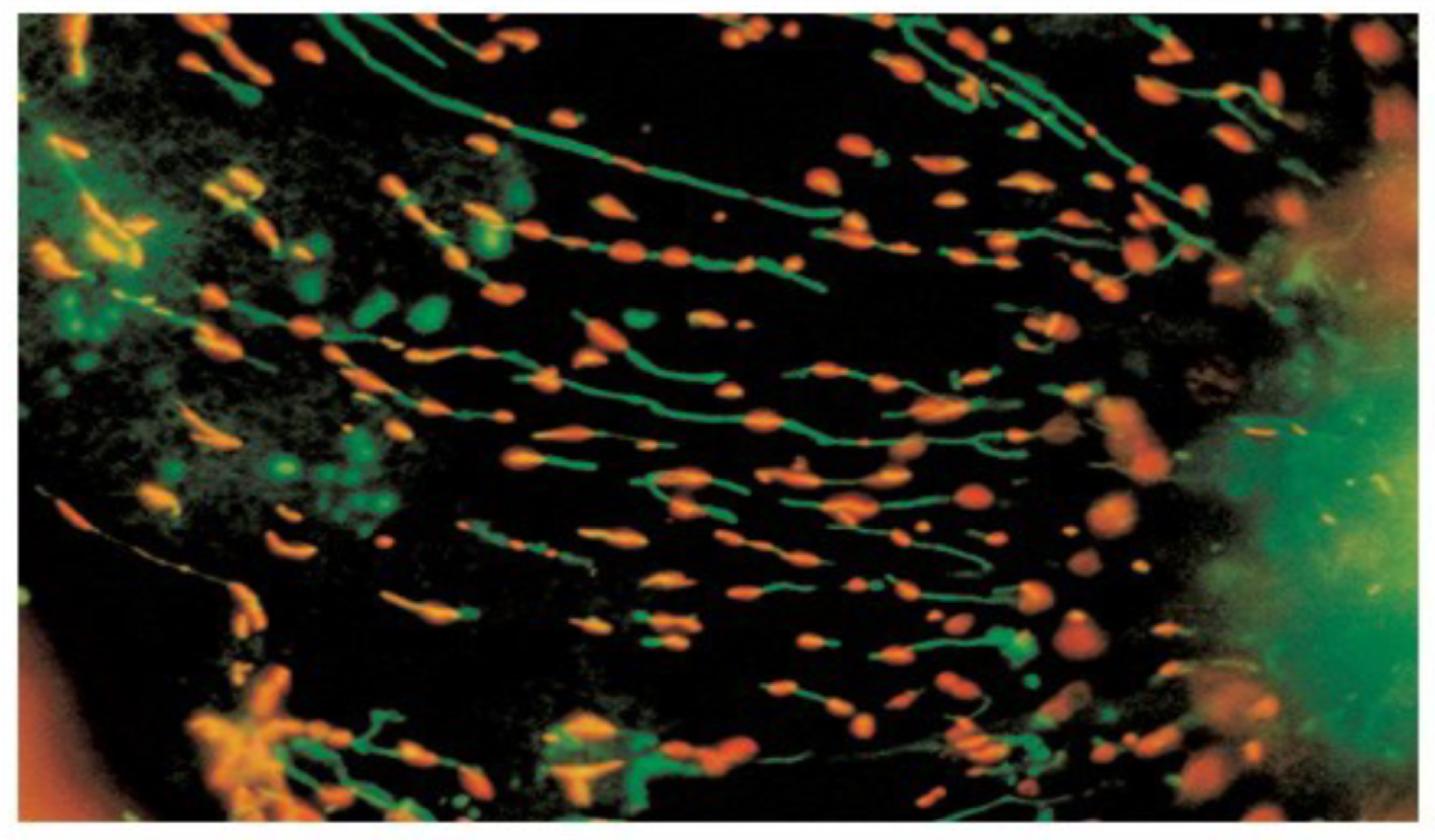
History
Joseph Priestley - photosynthesis 1771 (experimented on a mouse and mint)
Jan Ingenhousz - O2 increase requires light + green part of the plant
Therador Engelman - late 1800s
spirogyra —> isolate chloroplasts
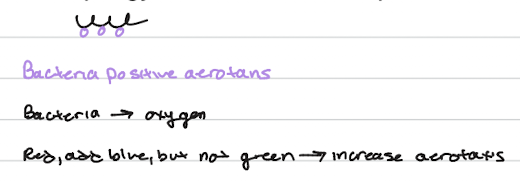
Robert Hill and Cornelius Van Niel
Experimented with photosynthesis in 1930s by studying sulfur bacteria
proposed that in the overall reaction, the oxygen produced does not come from the carbon dioxide, but instead comes from the water, which acts as the electron donor
observed that the sulfur bacteria, which use hydrogen sulfide instead of water, released sulfur instead of oxygen, proving that the waste product of photosynthesis is derived from the electron donor
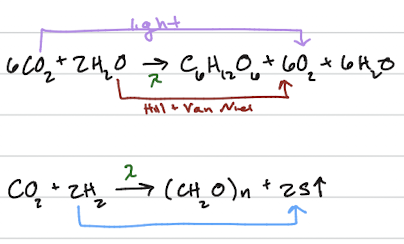
How did they (Hill and Niel) know sulfur bacteria don’t produce oxygen?
aerotaxis, where organisms respond to oxygen levels: normal, oxygen-producing photosynthetic organisms show negative aerotaxis (swimming away from a high concentration of O2)
showed no negative aerotaxis, which confirms they do not release O2, thereby supporting the finding that water, not CO2, is the source of oxygen in standard plant photosynthesis
Melvin Calvin
famous for discovering the Calvin Cycle
the primary process by which photosynthetic organisms, like plants and algae, perform carbon fixation, meaning they take carbon dioxide from the atmosphere and convert it into a stable organic compound—specifically, sugar—using the energy generated during the light-dependent reactions
Artificial Photosynthesis
involves reverse engineering the natural process of photosynthesis, which plants use to convert sunlight, water, and carbon dioxide into chemical energy
The goal of this artificial process is two-fold: to decrease from the atmosphere and to generate clean fuel (like hydrogen or hydrocarbons) for energy use
Cyanobacteria
1. photosynthetic produced
2. make too much energy
3. several striks have been sequenced
4. "cyonorendiation"
5. simple culture media
6. system - circadian clocks
7. cyanobacteria on mars?
Neoplants
genetically engineered or novel plants created for specific applications
β-carotene experiment
a pigment and precursor to Vitamin A) as a cancer preventative
the ATBC study conducted in Finland initially suggested that β-carotene could prevent lung cancer
the CARET study, which examined both male and female smokers
β-carotene experiment results
ATBC - indication of lung cancer --> increase 16%
CARET - indicates lung cancer increase 28%
Light Havesting complexes - span the specturm
light energy excites an electron in Chlorophyll within the Reaction Center
The energized electron is then passed to a Primary electron acceptor, creating a charge separation across the Thylakoid membrane
creates a strong reducing agent in the Stroma and a strong oxidizing agent in the Lumen, essentially converting light energy into chemical energy to drive the rest of the process
the protein plastocyanin is noted as a soluble carrier that transports electrons within the Electron Transport Chain (ETC)
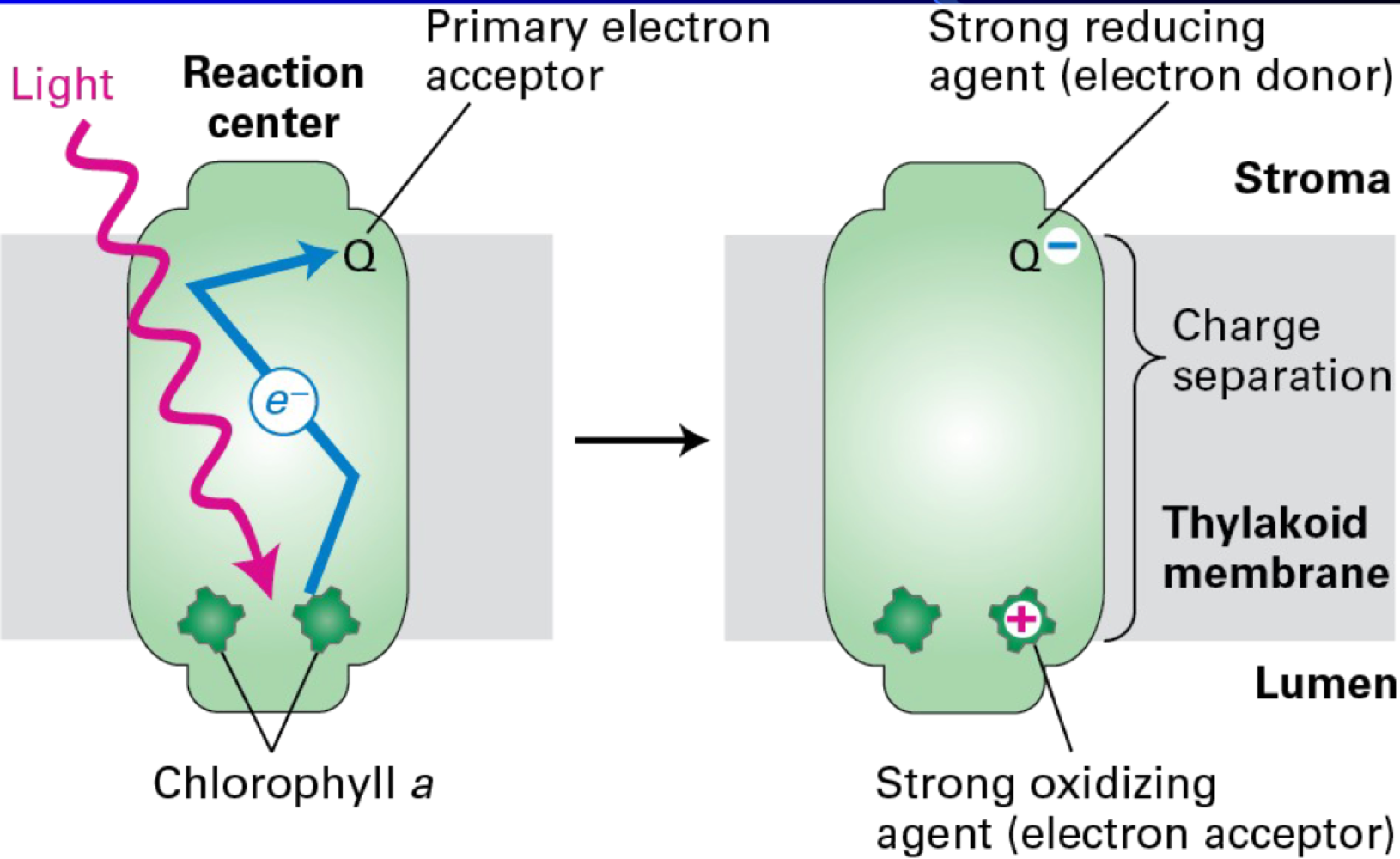
Cyclic electron flow
a specialized pathway used by the chloroplasts to balance the production of necessary energy carriers
electrons are recycled back through the first photosystem, resulting in the production of ATP through the creation of a proton gradient
the electrons are cycled back and do not travel through the full system, no NADPH is generated, allowing the cell to produce extra ATP when its energy demands are high
Photo inhibition
means by which land plants, algae, cyanobacteria and all other photosynthetic organisms can protect theor photosynthetic patheays agaainst light damage
Photosystem II is targeted and sensitive to blue light
D1 is a 32,000 Dalton PSII protein that has a high turnover rate and photoinhibition blocks its synthesis thus decreasing the activity of PSII and photosynthesis
The Chlamydomonas Chaperone Protein, HSP 70, Helps PSII to Recover from Photoinhibition as shown with HSP 70 over-expressing (OE) and under- expressing (UE) mutants
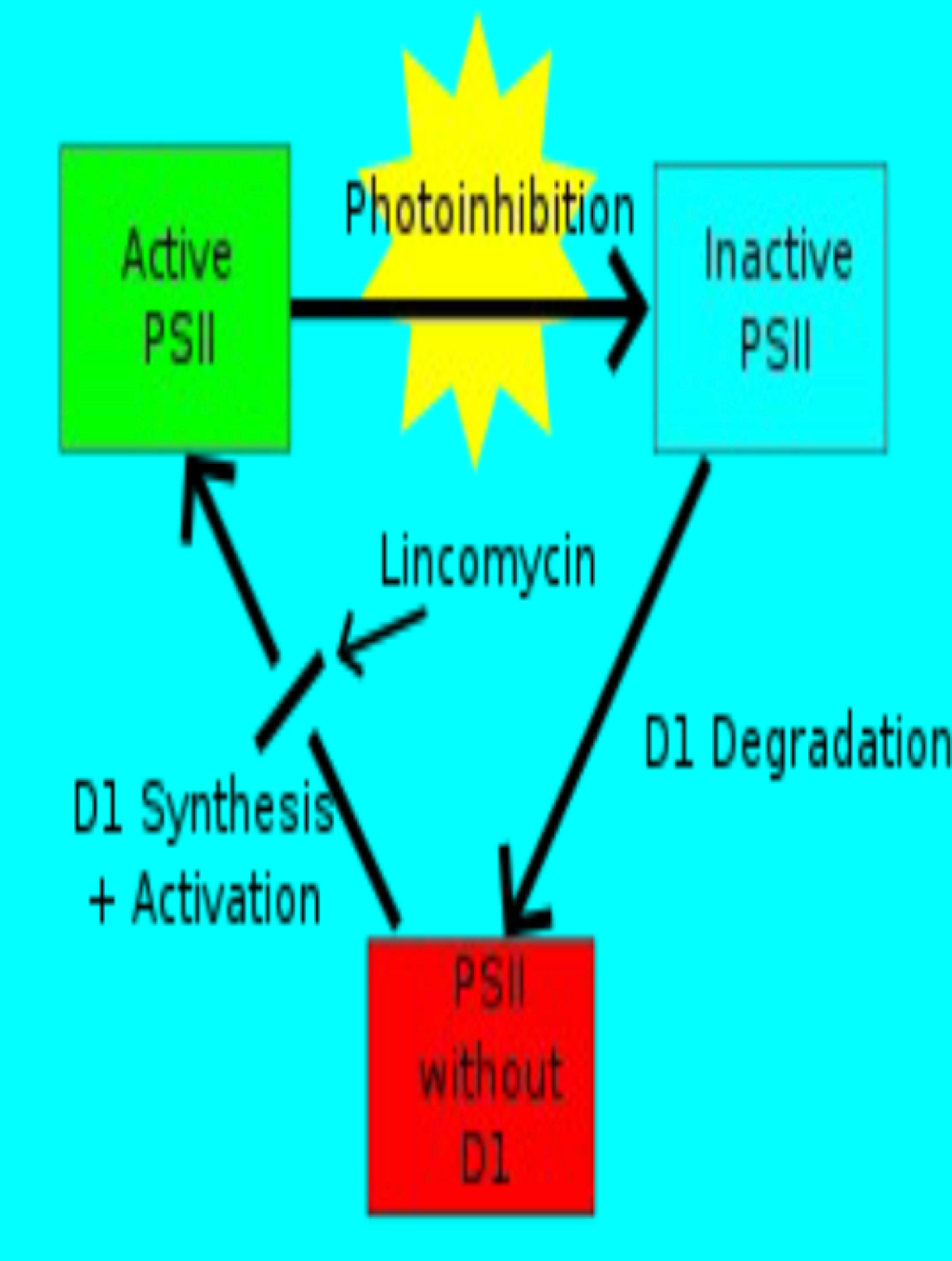
Photorespiration vs Carbon Fixation
Two enzymatic processes catalyzed by RUBISCO:
Carbon fixation is favored with high CO2 and low O2 concentrations
Photorespiration is favored with high O2 and low CO2 concentrations
Photorespiration is considered wasteful because it releases CO2
Carbon fixation generates glyceraldehyde-3-phosphate
RUBISCO and carbon fixation
very low affinity for carbon dioxide
limitation present in high amounts in plants
most abundant protein
required from carbon fixation can also undergo photorespiration
C4 plants do it differently
C4 plants live in hot arid environments with little CO2 in the atmosphere
Problem: RUBISCO has a relatively low affinity for CO2
Solution: C4 plants use PEP carboxylase which has a higher affinity
for CO2 to pump CO2 into the bundle sheath cells where RUBISCO can function due to the higher CO2 levels due to PEP carboxylase